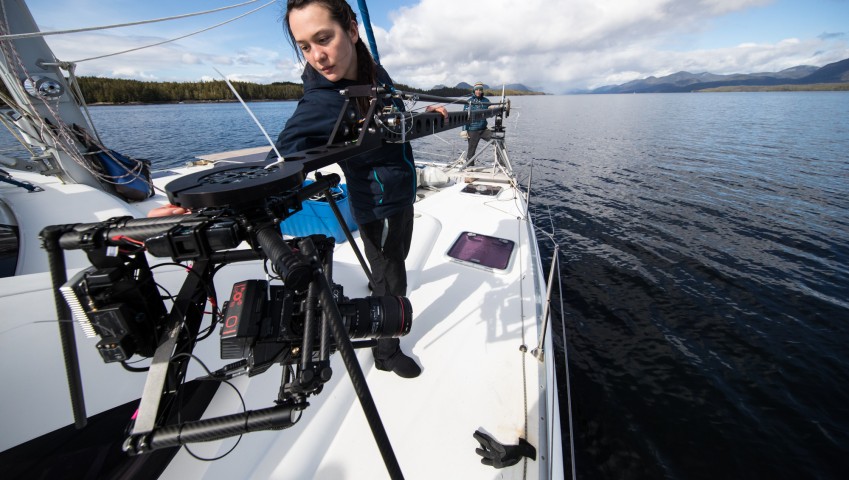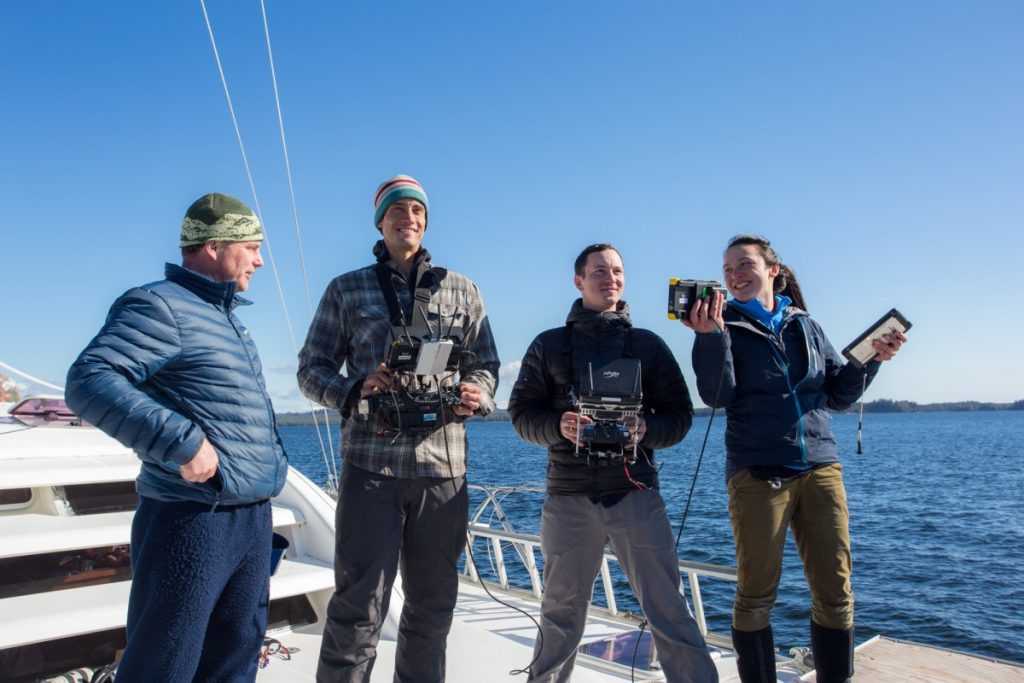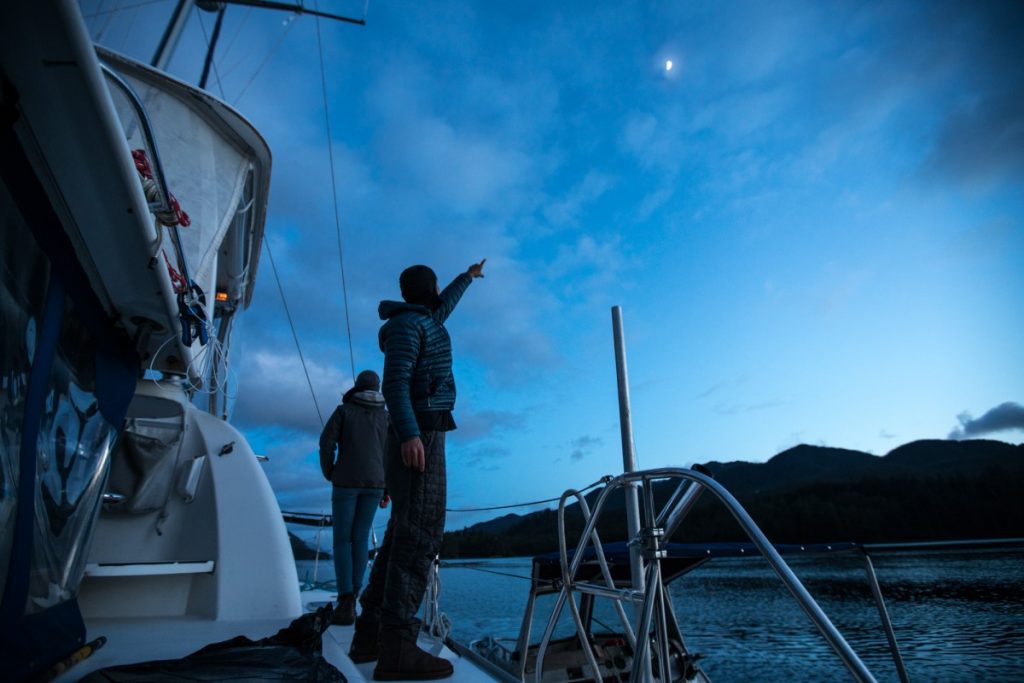Post-Shoot Reflections
By Deirdre Leowinata

On May 17th, 2016, I was sitting in the sunny green backyard of my lower floor apartment near Toronto’s High Park, staring at my phone while anxiously awaiting a call from Pacific Wild.
The words I will never forget: “So we’re kind of working on this IMAX movie.”
Eight days later, I received my second call from Pacific Wild’s Executive Director Ian McAllister. Eleven days later I was on my first flight north across the archipelago of B.C.’s central coast, Bella Bella-bound.
On June 5th, 2016, I was eating my first geoduck burger in Ian’s house on Denny Island, surrounded by the world’s vastest ocean. That day I said goodbye to the mad and constant motion of freelance film work in Toronto’s downtown core, and hello to wet mornings on the boat looking around at a constant line up of coastal visitors (whales, sea lions etc) and distant unexplored embankments of the Pacific Northwest. I had never lived close to the ocean—suddenly I was in it.
Fast forward to October 19th, 2017, and I have spent well over 300 days on the S/V Habitat, floating on the Pacific amidst Canada’s wildest landscapes. On this coastal journey, I have come up with many lists, the longest of which is the list of things I have learned along the way.
I learned early on about (in chronological order): Outboard engines, drone laws, tides (the hard way), how to secure gear in rolling waters, and about where one’s mind wanders during hours of log watch alone in the wheelhouse. I learned later about winter outflows and best dive tending practices in tidal rapids at night and, in other instances, how to stop your hands from going numb in the cold when they’re wet (okay, there’s really no way). I also learned about the severity of winter storms—the risk that always comes with those clear plankton free winter waters. I was introduced to the Heiltsuk First Nation’s relationship with herring, the Kitasoo and their efforts to protect grizzlies, the Gitga’at relationship with spirit bears, and a long list of other amazing coastal people each working in their own way to protect this place they call home. I learned how to fill a boat with fresh water from a waterfall, how to fillet and skin a fish, how not to set up a cable dolly, and how to act around mating grizzlies; I learned how long it can take to get to Vancouver when the weather isn’t on your side, and how quick it can be to get down the west coast of Vancouver island when it is on your side. I’ve also learned about the importance of people on a project like this—your crew is your best, and often your only, shoulder to lean on, so it should be chosen wisely. We seem to have lucked out on this project.
Over the past 16 months, I have been introduced to landscapes, wildlife, and moments that I could not have dreamt up. On my very first trip on the S/V Habitat, Ian and I shared the company of a beautiful female coastal wolf who greeted us at the entryway to her forest territory. Our crew has sailed into channels of fin whales and bubblenet-feeding humpbacks, joined every so often by groups of playful Dall’s porpoises. We have followed salmon as they return to their home waters to spawn, bringing this wet world to life in the fall. We have filmed the miles of turquoise water that are created by thousands of incoming spawning herring each year and the chaotic tumult of life that ensues, and then disappears. We have witnessed wolves and bears crossing channels to neighbouring islands and new forage grounds. We have sat in sheer and silent awe for hours amidst thousands of airborne tufted puffins, common murres, and pigeon guillemots. We have cheered, also silently, as a black bear mother defended her cheeky cub, and have been chilled by the sight of jellyfish blooms that are slowly but surely taking over these waters.

The best way to describe my year living aboard the S/V Habitat in the Great Bear Rainforest is that it was life at its most vivid. The challenge comes in finding a way to pay tribute to a place that has had such an impact on one’s person, but the work that our team has put into this film is an effective channel. It is hard to feel like what we are capturing can do this place justice after seeing its best over the course of four seasons. I can’t imagine what it must be like to direct after 20 years of experience the way Ian McAllister has.
Now that I think about it, the only thing this past year had in common with my life in Toronto apart from the cameras was, in fact, the mad and constant motion. It was just an utterly different kind.
This coast is an incredibly and uniquely rich and productive system, but being up here makes you realize how frighteningly fragile it is, and how many factors are increasingly threatening its balance. If nothing else, our crew and this IMAX project can add to the chorus of voices calling for its protection.


